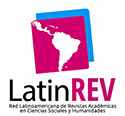El gran templo de Amón en la tumba de Neferhotep (TT49)
Abstract
La interpretación de la presencia del gran templo de Amón en el registro epigráfico de TT49 es abordada en este estudio en conjunto con la del santuario de Hathor representado en el mismo monumento. Ambas escenas se ubicaron en la capilla de la tumba de Neferhotep (TT49) y su evocación de los templos de Karnak y Deir el Bahari fue analizada desde una perspectiva relacional. En ella hemos considerado de manera enfática la localización espacial de cada escena en el programa decorativo del monumento, dado que la topografía del desarrollo iconográfico en su interior cumplía con una función específica, orientada a reproducir el paisaje ritual de Tebas. Éste habría sido construido para proveer el escenario apropiado a las grandes celebraciones del estado que los tenían como puntos focales del culto en un itinerario litúrgico que proyectaba el poder simbólico de la realeza al ámbito funerario.AbstractThe interpretation of the great temple of Amun presence in the epigraphic record of TT49 is addressed in this study together with that of the Hathor’s shrine represented in the same monument. The scenes were placed in the chapel of the tomb of Neferhotep (TT49) and his evocation of the temples of Karnak and Deir el-Bahari was analyzed from a relational perspective. It emphatically have considered the spatial location of each scene in the decoration of the monument, since the topography of the iconographic development met within a specific function, designed to replicate the ritual landscape of Thebes. This would have been constructed to provide the appropriate scenery to large state celebrations as focal points of worship in a liturgical itinerary that projected the symbolic power of kingship on the funerary sphere.Downloads
I dati di download non sono ancora disponibili
Come citare
Pereyra, M. V. (1). El gran templo de Amón en la tumba de Neferhotep (TT49). Revista Del Instituto De Historia Antigua Oriental ’Dr. Abraham Rosenvasser’, (17), 17-26. https://doi.org/10.34096/rihao.n17.170
Fascicolo
Sezione
Artículos





.jpg)








